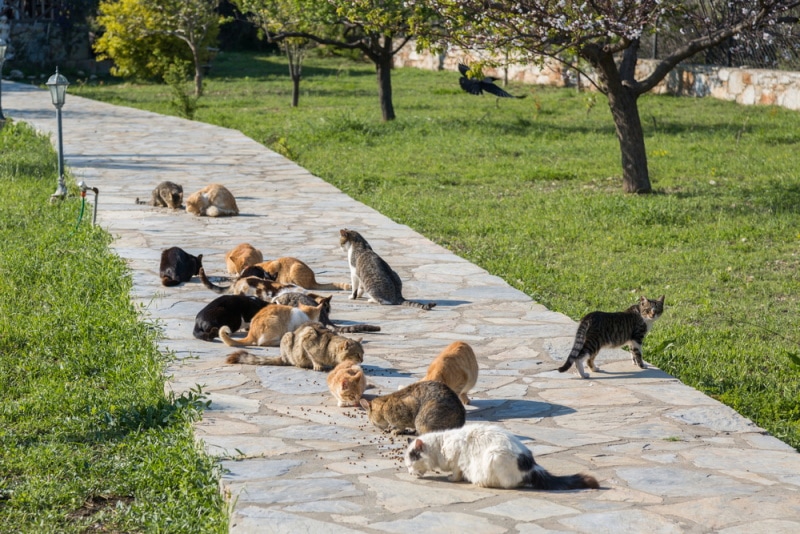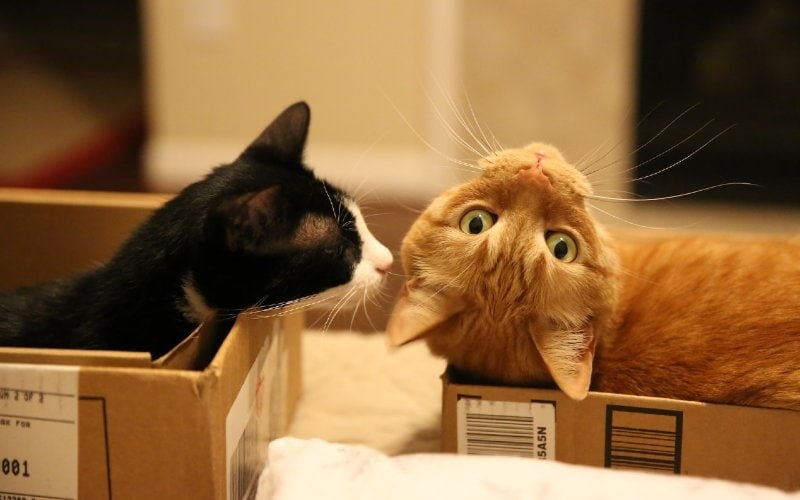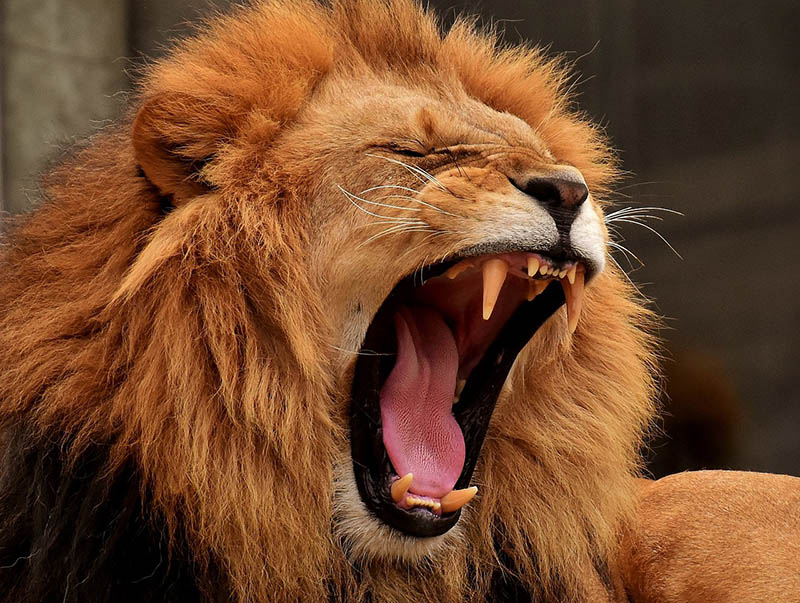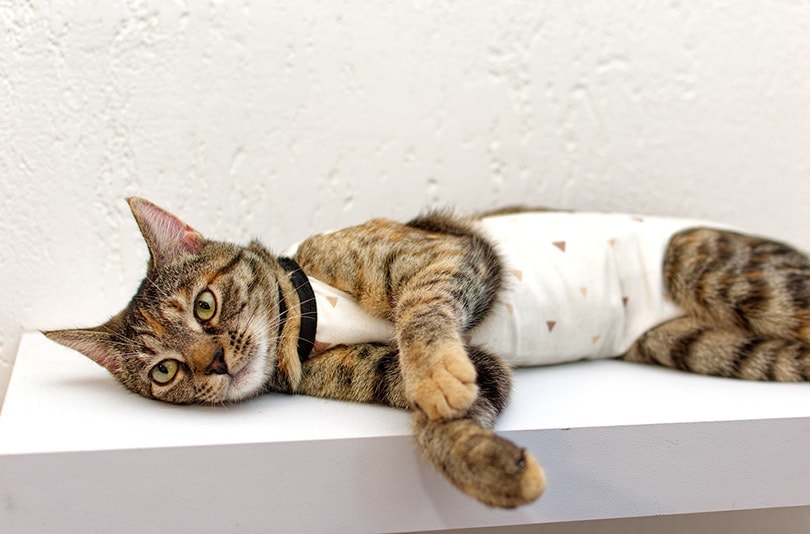Are Cats Pack Animals? Feline Social Structure Explained

Updated on

You may have noticed cat owners with multiple cats getting along with each other, or maybe stray cats forming groups on the street and wondering if cats are really “pack” animals.
The simple answer is no. Cats are not pack animals. Cats are solitary predators like their wild ancestors. Solitary predators are animals that hunt alone, allowing them to survive in the wild on their own. Much like their wild ancestors, domestic and feral cats instinctively exhibit solitary behavior. It is through adaptation to their environment that they conform to group living with their own unique social structures.
For cats’ social structures, territory plays a huge role along with the male-female dynamic. In this article, we discuss these points to give us a better understanding of the social structure of cats!
What Are Pack Animals?
Pack animals live, hunt, and survive as a group. Animals that live in packs have complex and hierarchical social structures. Everyone in the pack plays a significant role in the function and survival of the pack.
The complex social hierarchy of pack animals can also be seen in their different roles. All packs have leaders known as the alpha. This role is followed by the beta, the individual seen as the alpha’s successor. These roles go all the way down to the middle and lower ranks until the lowest rank of omega is reached.
Pack mentality is vital in the survival of animal packs. The individuals within the pack are required to act together and fulfill their roles to survive. For cats, however, this does not apply as cats merely adapt to the group-living environment as compared to the actual need for a group for survival. Cats can survive on their own.
Territories Among Cats

In the wild, solitary hunters establish a hunting territory. To prevent conflict with rivals, wild cats establish their hunting territory using the scent from their urine, feces, and other glands that secrete their unique scent. Although there is the presence of neutral grounds where other wild cats can greet and interact with each other, marking their territory prevents any competition over prey and is crucial to survival.
If you have stray cats in your neighborhood, you may notice that they patrol a particular space and very rarely wander away from the area. This is simply the territorial behavior exhibited by stray cats through instinct.
Although this hunting territory behavior may not apply to pet cats, their territorial nature is also apparent as they claim certain areas where they feel secure and comfortable. Cats, whether wild, feral, or domesticated, put high importance on their personal space!
Cats and Their Colonies
For neighborhoods or public areas with stray cats, you may find them forming groups or small colonies in the same territory. This behavior can easily pass as a pack, but the structure does not match the definition of a pack. Cats can form colonies in a territory based on the availability of food and resources, but they do not necessarily function as a group. Cats will still hunt and scavenge for resources alone rather than in a group.
Cats can, however, form cooperating relationships. The majority of these are matrilinear in nature, where females and kittens work together to survive. Close relationships can also be formed by some cats while having little to no interaction with others in the same colony. These cat colonies do not have the distinct roles and social hierarchy as seen in other established pack animals.
For cats, developing colonies and social groups are a product of the environment and not a direct means of survival. These colonies can also only survive if there is no competition over resources.
Domesticated Cats

For cat owners who own multiple cats or other animals as pets, cats can develop social relationships. They can form close relationships with their humans and even grow to rely on their companionship. They can also grow to form a relationship with dogs and other pets in the household.
The Male and Female Dynamic in Cat Colonies
When colonies form, they are predominantly female. Cat colonies are matrilineal in nature. The entire social structure is based on maternal and female kinship. Male cats, on the other hand, are not generally part of cat colonies. Males prefer to live and hunt alone and can be found in the periphery of territories that overlap other male territories and colonies.
While larger in number, female colonies tend to have smaller territories compared to males. Female colonies choose their territories in relation to the abundance of resources in relation to the members of their colony. Male territories are larger due to the considerable overlap among different territories, allowing them to hunt in bigger areas for food.
What About Lions?

In the feline world, lions are the only cats that are not solitary predators. Lions are the only pack animals; a pride of lions has a complex social hierarchy and roles to function and survive. Rather than hunting alone, they work together in groups to take down larger animals.
Prides of lions also have a different male-female dynamic compared to other cats. A lion pride commonly consists of multiple females with one or two males, each with their own role in the social hierarchy and structure. Lions also raise their cubs as a group. When lion cubs reach a certain age, males are kicked out of the group and find their place in another pride.
Lions and the only cats that neither hunt nor survive on their own. Other wild cats, such as the tiger, cheetah, and jaguar, are all quintessential solitary predators and are rarely seen in groups.
Conclusion
Whether a wild cat or a domesticated cat, felines are instinctively solitary predators. They are territorial animals that prefer to live and hunt alone. Cat colonies and relationships seen in both feral and domesticated cats are formed through environmental adaptation rather than the need for survival.
Cats form deep bonds with their owners, their fellow pets, and even other cats, but it is in their nature to live and survive on their own.
See also: Could A Cat Survive in A World Without Humans? Interesting Facts
Featured Image Credit: Murat An, Shutterstock









